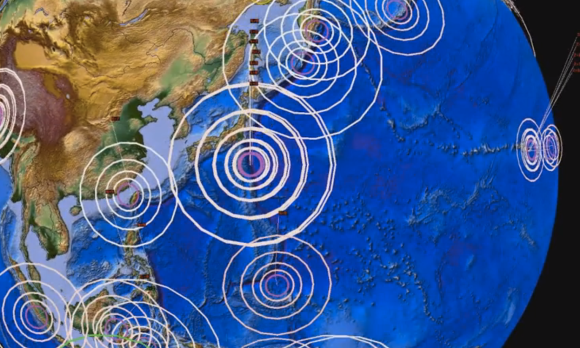
Japan is home to 110 active volcanoes, 47 of which are monitored continually by the Japan Meteorological Association (JMA). Japan also holds seven percent of all the active volcanoes in the world.
Last year, Mount Ontake in Nagano Prefecture exploded without warning, killing over 60 people, many of them hikers. Mount Hakone in the hot springs resort town near Mount Fuji is on level-2 alert. Mount Fuji itself, a dormant volcano and World Heritage site is being looked at with a wary eye by many and authorities are advising hikers to wear helmets, dust masks and goggles when climbing. The volcano that most appears in the news, however, is Sakurajima, located off Kyushu, which is also one of the world’s most active volcanoes.
“Dutchsinse,” a self-proclaimed “News Personality” who has a cult following on Facebook and YouTube gives a near daily video update of volcanic and earthquake activity around the world. He recently highlighted Japan’s volcanoes and earthquakes and warns that pressure building in the region of Sakurajima, along with other multiple large eruptions in the Pacific region, could be a sign of something bigger to come.
While the propensity for imminent volcanic destruction is scary, we also must respect that volcanic eruptions are, overall, good things because they allow the earth to release pent-up pressure and general volcanic frustration. We’re far better off letting volcanoes vent than trying to shut them up, right?
Earthquakes on the other hand, are less tolerable even if also geologically necessary. They are far less predictable and seem to have no other intent than to destroy mankind via its virtue of unpredictability. Whereas many volcanoes are visible and thus observable, tectonic plates are hidden under the earth or the seabed like terrorist cells waiting to unleash their destructive power. We know they’re there, we just don’t know when or exactly where they’ll attack.
So the appeal of being able to predict earthquake activity is great. We all hope that some day we’ll be able to look up the earthquake forecast, like the weather, and prepare for it accordingly.
Enter Dutchsinse and his current YouTube video titled “Major Earthquake Unrest–Next 7 day outlook–Pacific be prepared.” Dutchsinse’s real name is Micheal Janitch. No one really knows dutchsinse’s qualifications in volcanology or earthquakology and since he doesn’t back up his findings with any, we can only presume he has none. He’s highly controversial, with people accusing him of being a fake and a conspiracy theorist. All I can say is that on his Facebook page, he uses a hell of a lot of exclamation points.
But you have to admire a guy who is so passionate about volcanoes that he spends almost all of his days assembling videos and narrations with amazing graphics and real-time video and who then presents them in an easy-to-understand format. Makes you wonder, why aren’t any of the “qualified” people doing this too?
In this particular video, he uses Earthquake 3D to look at what he claims is 48 hours of 4.0 and above (presumably the Richter scale) earthquake activity around the world as related to volcanic eruptions.
▼Cool graphics! Learning about earthquakes can actually be fun.
▼This one shows a “swarm” of volcanoes off the Hawaiian islands.
▼Here, the Izu Trench is shown to the right of the orange markers indicating a chain of over 100 volcanoes on the ocean floor. There they sit, like little twinkle lights engineered by Ebenezer Scrooge.
So far so good. I don’t know about you, but I’ve already learned a lot just by seeing these graphics.
Dutchsinse’s idea is that by looking at volcanic and earthquake activity around the world, we can more easily predict what will happen closer to our own shores. Previous explosions and quakes affect far-away regions by either causing them to building up stress or ease it, and we can track how such events coincide to predict future activity.
While dutchsinse believes that eruptions further south in the Philippines and Indonesia indicate that stress is being taken away from Japan, at the same time he notes recent activity in the Hawaiian islands could be a sign of a large earthquake in the Pacific region.
His conclusion this week is that there is a high probability of an earthquake south of Sakurajima, as well as one north of Hokkaido, the latter of which, if over 7.0, will create a tsunami. “This is no light warning to be issued to south and north Japan,” he trumpets in his video. He bases his conclusions on the following three factors:
1. An active swarm along the Izu Trench.
2. At least two or three major volcanoes showing activity.
3. A recent upheaval of land
So, keeping these three points in mind, let’s take a closer look at the history of Japan’s volcanoes.
Japan has five levels of volcanic warnings: 1 (normal), 2 (advises restrictions to certain areas), 3 (do not approach volcano), 4 (prepare to evacuate) and 5 (evacuation).
Sakurajima–Kagoshima Prefecture
Sakurajima is an island 8km west of Kyushu’s Kagoshima city. The 17 x 23 km wide Aira caldera was formed 22,000 years ago and Sakurajima continues to be one of the most active volcanoes in the world. The constantly spewing volcano has experienced heightened activity with the Japan Meteorological Association reporting 855 explosive eruptions in 2013. In addition, 2,643 earthquakes were recorded, the bulk of them between Jan and March of 2013. From May 1-11 of this year, the JMA recorded 105 explosions from the Showa Crater (one of several craters on the island). On May 10, an explosion caused an ash plume 3.2 kilometers high.
Janitch sees this as one of the two major volcanoes showing activity that portends a large earthquake.
Mount Ontake–Nagano & Gifu prefectures
▼Mount Ontake, days after the explosion in September 2014.
Japan’s second highest volcano, Mount Ontake suddenly blew without warning last year, killing over 60 people. It had not erupted since 1991 and experts say there was no way to have foreseen such activity.
This volcano, (which should not be confused with the volcano of the same name on Sakurajima), has not been cited by Janitch in his latest predictions.
Mount Fuji–Shizuoka and Yamanashi Prefectures
Mount Fuji’s most recent eruption was in 1707, and took place 49 days after the large Hoei earthquake. The ash is said to have reached as far as Tokyo. Mount Fuji is considered a dormant volcano but as a direct result of Mount Ontake’s surprise explosion last year climbers are now advised to wear a helmet, dust mask and goggles. In October 2014 three prefectures around Mount Fuji–Shizuoka, Yamanashi and Kanagawa–cooperated to stage their first disaster drill in case of an eruption.
Mount Fuji is only casually referred to by Janitch for its location near Hakone.
Mount Hakone–Kanagawa Prefecture
Hakone is a resort town near Mount Fuji known for its volcanic hot springs and its views of Mount Fuji as well as the ekiden marathon and car racing. The Mount Hakone volcano which hasn’t erupted for at least 800 years, is now showing signs of activity, and has prompted the town to raise its alert level to 2 over the past week. The hiking trail to Owakudani, or Great Boiling Valley, is, not surprisingly, closed. Live streaming of the vent can be seen here.
Janitch cites Mount Hakone as the second of the two major volcanoes showing activity. He also says the hot springs are shut down and that people can’t go there, but that is not true.
Nishinoshima–Ogasawara Islands
Nishinoshima is an island along the Izu Trench. It first erupted in 1978 which caused it to increase in size. More recently, on Dec. 8, 2013, it erupted again doubling its size by joining with another island called Niijima.
▼Nishinoshima in 1978
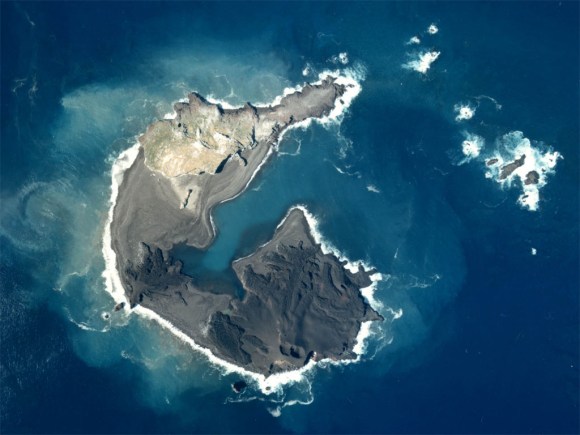
▼Nishinoshima in October 2014.
Janitch says this new island, evidence of activity in a swarm, is another indication of something larger to come in the very near future.
The third and final indication of an impending large tremor, according to Janitch, is a land mass that rose 15 meters (50 feet) out of the sea in Northern Hokkaido.
This is all great stuff. However, it is hardly novel. The novel part is suggesting that such earthquake activity can be predicted in the immediate future based on these factors. Surely his observations and methods have already been carried out by experts who have been researching the phenomenon much longer, such as the Geospatial Information Authority of Japan, the Japan Meteorological Agency’s Coordinating Committee for the Prediction of Volcanic Eruptions and the Central Disaster Management Council? And although people have praised Janitch for accurately predicting some earthquakes in the past, I’d hazard to say that there are also hundreds that haven’t come true.
I would guess that the real reason Janitch has such a following is merely because he is doing what many of us dream of doing: quitting our jobs, following our passions, and sharing our results with the world.
While Japan laments the decline in volcano experts (there are reported to be fewer than 50 involved in the predicting eruptions), they could look to this guy’s presentation skills to see how they might appeal to young people and make it a more interesting field to go into.
Are we all gonna die? No. Are some of us gonna die? Most certainly. Earthquakes and volcanoes have been killing people for as long as humanity has existed. So, go write out your will and buy your grave plot, not because you’re going to die soon, but because you should have already done this anyway. (P.S. If it’s cremation you’re looking for, then remember: location, location, location).
Source: YouTube (Dutchsinse)

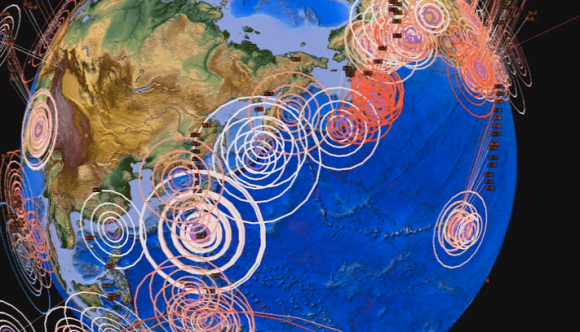
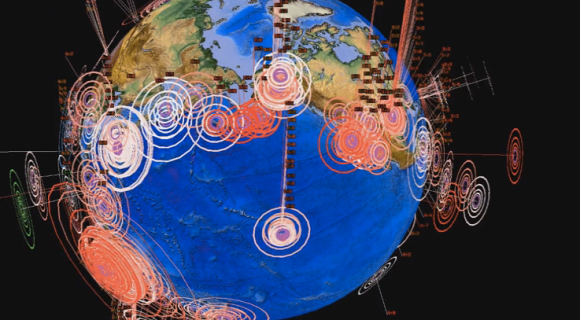
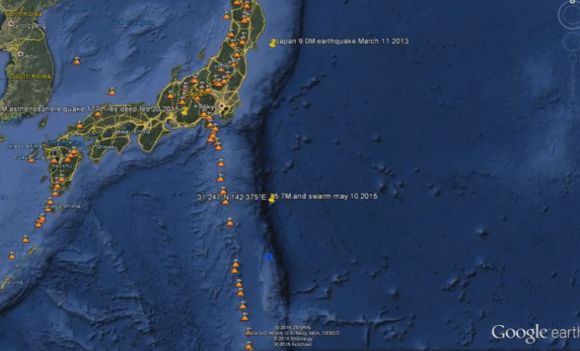
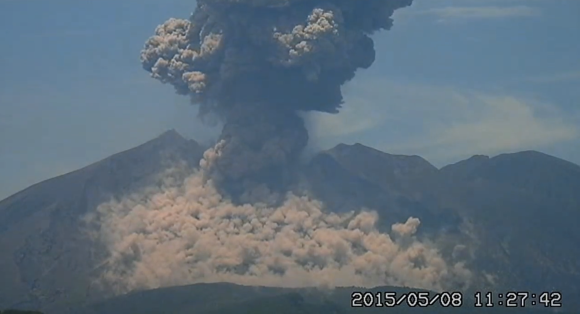
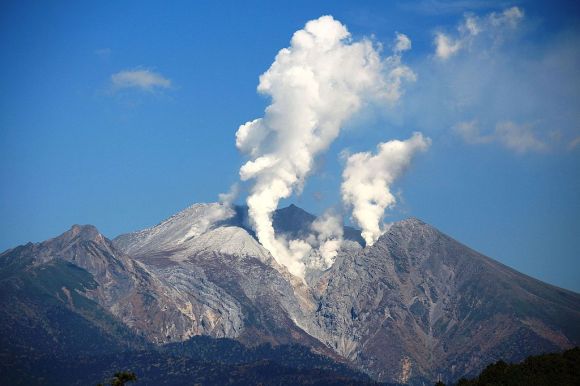
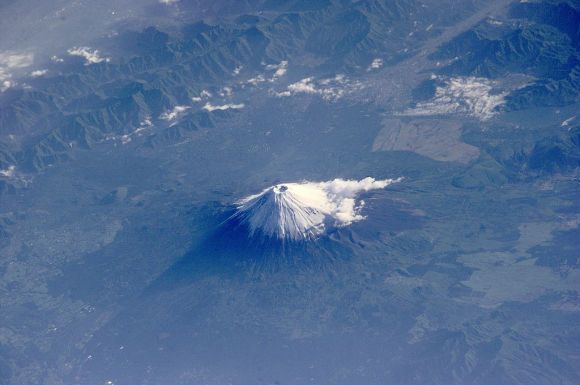
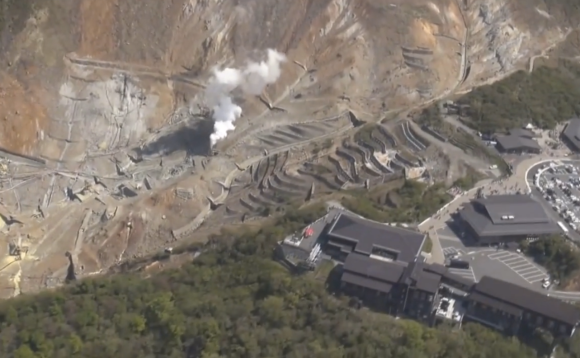
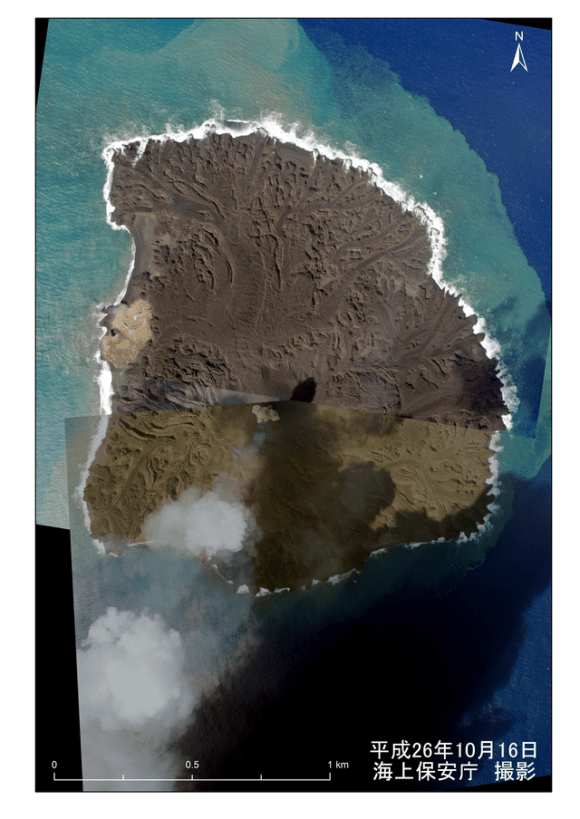 Wikipedia (Japan Coast Guard)
Wikipedia (Japan Coast Guard) Volcano Spawns Terrifying Tornado-Like Twisters【GIFS】
Volcano Spawns Terrifying Tornado-Like Twisters【GIFS】 Mt Fuji looks unusual, sparks fears of possible eruption
Mt Fuji looks unusual, sparks fears of possible eruption Continuing earthquakes in Kumamoto have moved a GPS observation station nearly one meter
Continuing earthquakes in Kumamoto have moved a GPS observation station nearly one meter Japan’s Mt. Aso currently erupting, Kyushu residents capture dramatic photos
Japan’s Mt. Aso currently erupting, Kyushu residents capture dramatic photos Mount Ontake: some hikers “died taking photos of the erupting volcano”, pathologist says
Mount Ontake: some hikers “died taking photos of the erupting volcano”, pathologist says McDonald’s new Happy Meals offer up cute and practical Sanrio lifestyle goods
McDonald’s new Happy Meals offer up cute and practical Sanrio lifestyle goods All-you-can-drink Starbucks and amazing views part of Tokyo’s new 170 meter-high sky lounge
All-you-can-drink Starbucks and amazing views part of Tokyo’s new 170 meter-high sky lounge More foreign tourists than ever before in history visited Japan last month
More foreign tourists than ever before in history visited Japan last month Starbucks reopens at Shibuya Scramble Crossing with new look and design concept
Starbucks reopens at Shibuya Scramble Crossing with new look and design concept Beautiful Sailor Moon manhole cover coasters being given out for free by Tokyo tourist center
Beautiful Sailor Moon manhole cover coasters being given out for free by Tokyo tourist center Is the new Shinkansen Train Desk ticket worth it?
Is the new Shinkansen Train Desk ticket worth it? Randomly running into a great sushi lunch like this is one of the best things about eating in Tokyo
Randomly running into a great sushi lunch like this is one of the best things about eating in Tokyo The oldest tunnel in Japan is believed to be haunted, and strange things happen when we go there
The oldest tunnel in Japan is believed to be haunted, and strange things happen when we go there New Pikachu plushie cozies up inside ketchup bottle, looks so cute that we could eat him right up
New Pikachu plushie cozies up inside ketchup bottle, looks so cute that we could eat him right up Foreign worker in Japan fends off armed robber with single word, gets no respect from local media
Foreign worker in Japan fends off armed robber with single word, gets no respect from local media Disney princesses get official manga makeovers for Manga Princess Cafe opening in Tokyo
Disney princesses get official manga makeovers for Manga Princess Cafe opening in Tokyo We try out “Chan Ramen”, an underground type of ramen popular in the ramen community
We try out “Chan Ramen”, an underground type of ramen popular in the ramen community Beautiful new Final Fantasy T-shirt collection on the way from Uniqlo【Photos】
Beautiful new Final Fantasy T-shirt collection on the way from Uniqlo【Photos】 Foreign English teachers in Japan pick their favorite Japanese-language phrases【Survey】
Foreign English teachers in Japan pick their favorite Japanese-language phrases【Survey】 There’s a park inside Japan where you can also see Japan inside the park
There’s a park inside Japan where you can also see Japan inside the park Japanese convenience store packs a whole bento into an onigiri rice ball
Japanese convenience store packs a whole bento into an onigiri rice ball Studio Ghibli releases Kiki’s Delivery Service chocolate cake pouches in Japan
Studio Ghibli releases Kiki’s Delivery Service chocolate cake pouches in Japan Japan’s bone-breaking and record-breaking roller coaster is permanently shutting down
Japan’s bone-breaking and record-breaking roller coaster is permanently shutting down New definition of “Japanese whiskey” goes into effect to prevent fakes from fooling overseas buyers
New definition of “Japanese whiskey” goes into effect to prevent fakes from fooling overseas buyers Foreign passenger shoves conductor on one of the last full runs for Japan’s Thunderbird train
Foreign passenger shoves conductor on one of the last full runs for Japan’s Thunderbird train Our Japanese reporter visits Costco in the U.S., finds super American and very Japanese things
Our Japanese reporter visits Costco in the U.S., finds super American and very Japanese things Kyoto bans tourists from geisha alleys in Gion, with fines for those who don’t follow rules
Kyoto bans tourists from geisha alleys in Gion, with fines for those who don’t follow rules Studio Ghibli unveils Mother’s Day gift set that captures the love in My Neighbour Totoro
Studio Ghibli unveils Mother’s Day gift set that captures the love in My Neighbour Totoro Domino’s Japan now sells…pizza ears?
Domino’s Japan now sells…pizza ears? New Japanese KitKat flavour stars Sanrio characters, including Hello Kitty
New Japanese KitKat flavour stars Sanrio characters, including Hello Kitty Sales of Japan’s most convenient train ticket/shopping payment cards suspended indefinitely
Sales of Japan’s most convenient train ticket/shopping payment cards suspended indefinitely Sold-out Studio Ghibli desktop humidifiers are back so Totoro can help you through the dry season
Sold-out Studio Ghibli desktop humidifiers are back so Totoro can help you through the dry season Japanese government to make first change to romanization spelling rules since the 1950s
Japanese government to make first change to romanization spelling rules since the 1950s Ghibli founders Toshio Suzuki and Hayao Miyazaki contribute to Japanese whisky Totoro label design
Ghibli founders Toshio Suzuki and Hayao Miyazaki contribute to Japanese whisky Totoro label design Doraemon found buried at sea as scene from 1993 anime becomes real life【Photos】
Doraemon found buried at sea as scene from 1993 anime becomes real life【Photos】 Tokyo’s most famous Starbucks is closed
Tokyo’s most famous Starbucks is closed One Piece characters’ nationalities revealed, but fans have mixed opinions
One Piece characters’ nationalities revealed, but fans have mixed opinions We asked a Uniqlo employee what four things we should buy and their suggestions didn’t disappoint
We asked a Uniqlo employee what four things we should buy and their suggestions didn’t disappoint Princesses, fruits, and blacksmiths: Study reveals the 30 most unusual family names in Japan
Princesses, fruits, and blacksmiths: Study reveals the 30 most unusual family names in Japan Studio Ghibli’s new desktop Howl’s Moving Castle will take your stationery on an adventure
Studio Ghibli’s new desktop Howl’s Moving Castle will take your stationery on an adventure Fiery balls of lava erupting from Nishinoshima eruption caught on video
Fiery balls of lava erupting from Nishinoshima eruption caught on video Hakone volcano erupts on small scale
Hakone volcano erupts on small scale Mount Aso: I heard you like volcanoes, so I put some volcanoes in your volcano【Photos】
Mount Aso: I heard you like volcanoes, so I put some volcanoes in your volcano【Photos】 Geographical Survey Institute posts 184 images of Mount Ontake eruption online
Geographical Survey Institute posts 184 images of Mount Ontake eruption online U.S.-Japan release collaborative video of support one year after Kumamoto earthquakes【Video】
U.S.-Japan release collaborative video of support one year after Kumamoto earthquakes【Video】 Japan’s most famous hot spring resort runs ad telling us to go to…a different hot spring resort
Japan’s most famous hot spring resort runs ad telling us to go to…a different hot spring resort Oldest man in the world celebrates his birthday following recognition from Guinness World Records
Oldest man in the world celebrates his birthday following recognition from Guinness World Records New Volcanic Japanese KitKats unveiled at star-studded Tokyo event
New Volcanic Japanese KitKats unveiled at star-studded Tokyo event The top 5 places to see the sun set in Japan
The top 5 places to see the sun set in Japan Domino’s Japan’s New Cheese Volcano Pizza is a game-changer that’s about to go global
Domino’s Japan’s New Cheese Volcano Pizza is a game-changer that’s about to go global We visit one of Japan’s stunning secret destinations: the “Road to Laputa” in Kumamoto
We visit one of Japan’s stunning secret destinations: the “Road to Laputa” in Kumamoto Is Japan about to be rocked by a big earthquake?
Is Japan about to be rocked by a big earthquake? Mount Fuji plans to start charging compulsory fee to climbers
Mount Fuji plans to start charging compulsory fee to climbers Hiking restrictions result in huge drop in climbing accidents, with zero on Mt. Fuji
Hiking restrictions result in huge drop in climbing accidents, with zero on Mt. Fuji Kagoshima City releases catchy promotional video with weird dancing, bushy eyebrows, no pants
Kagoshima City releases catchy promotional video with weird dancing, bushy eyebrows, no pants
Leave a Reply